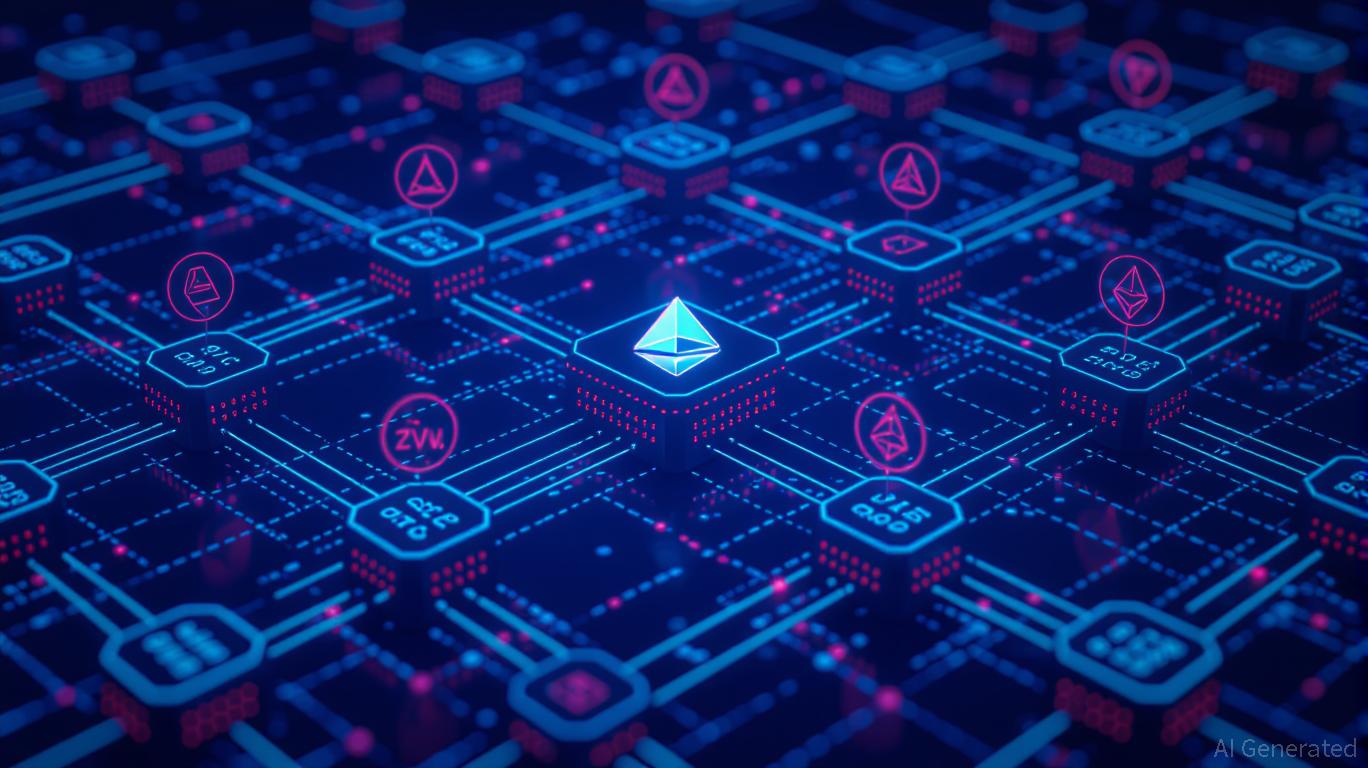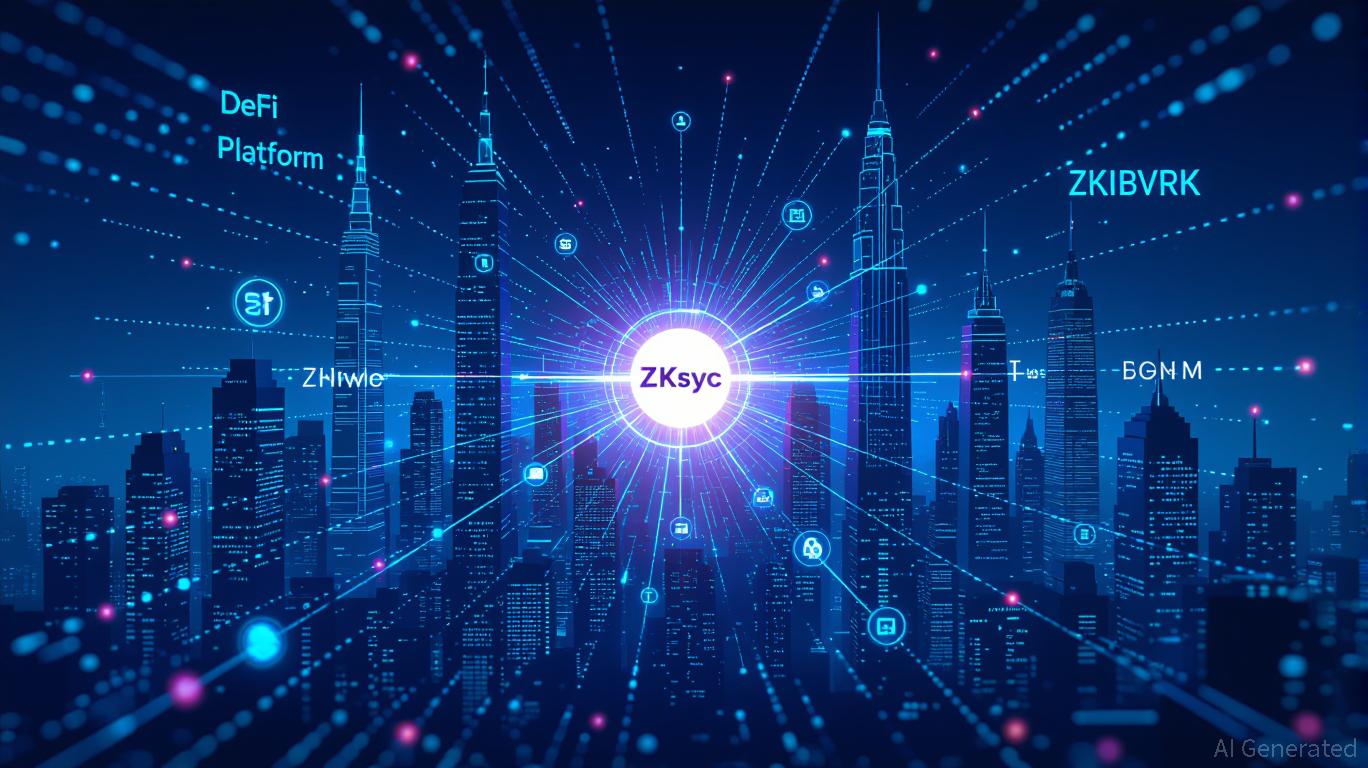ZK Atlas Enhancement: Driving Blockchain Expansion and Business Integration in 2025
- ZKsync's 2025 Atlas Upgrade introduces a high-performance ZK stack with 15,000+ TPS, redefining blockchain scalability through modular Layer 2/3 infrastructure. - The upgrade enables bridge-free Ethereum interoperability and supports EVM/RISC-V/WASM compatibility, addressing enterprise needs for hybrid blockchain solutions. - Institutional adoption surges with ZK token's 50% price jump and $19M+ partnerships, though legacy system integration and regulatory clarity remain key challenges. - BaaS compatibil
Scalability Reimagined: ZK Atlas’s Technical Innovations
Fundamentally, the ZK Atlas Upgrade represents a major reengineering of ZKsync’s system. The rollout of a high-throughput sequencer that can handle over 15,000 transactions per second (TPS) directly confronts the throughput constraints seen in traditional Layer 1 blockchains such as
The ZKsync OS further strengthens this ecosystem by providing a modular and adaptable platform. With support for multiple execution environments—including Ethereum
Enterprise Integration: Connecting Innovation with Real-World Needs
For blockchain to become widely adopted by enterprises, it must overcome two main obstacles: liquidity fragmentation and interoperability. The ZK Atlas Upgrade addresses these by enabling seamless interoperability between Layer 2 networks and Ethereum’s mainnet, removing the need for centralized bridges that have historically posed security and liquidity risks, as explained in the Zeeve blog. By allowing Layer 2 networks to access Ethereum’s vast liquidity pool, ZKsync streamlines processes for businesses aiming to tokenize real-world assets (RWAs) or conduct cross-chain transactions, as highlighted in a
Interest from institutional players has already increased. The ZK token’s 50% price jump following the upgrade signals rising trust in ZKsync’s capabilities for enterprise use, while investments such as Grvt’s $19 million funding round demonstrate the platform’s attractiveness to venture capital and corporate partners, as reported in the Bitget report. Additionally, solutions like RedStone’s Credora platform—which delivers real-time risk analytics for DeFi protocols—meet institutional requirements for transparency and regulatory compliance, as noted in the Bitget report. Together, these developments help resolve a major challenge for adoption: the absence of strong governance and risk management systems in decentralized environments.

Obstacles and Future Prospects
Even with its advancements, the ZK Atlas Upgrade does not resolve every challenge to enterprise blockchain adoption. Integrating with existing IT infrastructure remains a complicated and expensive process, especially in sectors like healthcare and manufacturing where data silos are prevalent, as discussed in a
Nevertheless, the upgrade’s modular approach and compatibility with Blockchain-as-a-Service (BaaS) platforms—using cloud services like AWS and Azure—provide a practical solution. By simplifying infrastructure management, these services allow companies to implement ZK-based applications without needing to completely overhaul their current technology, as described in the London Blockchain analysis. Moreover, the intersection of blockchain and AI is becoming increasingly important, with smart contracts automating governance for AI models and ensuring data transparency—an essential feature for industries such as finance and supply chain, as covered in the London Blockchain analysis.
Conclusion: A Strategic Investment Prospect
The ZK Atlas Upgrade stands as more than just a technical achievement; it represents a strategic shift toward a future where blockchain scalability and enterprise integration go hand in hand. By tackling issues of throughput, interoperability, and institutional trust, ZKsync has established itself as a key infrastructure provider for the next generation of decentralized technology. For investors, the upgrade’s value lies in its ability to attract enterprise users and institutional funding—a trend already visible through token price growth and new partnerships.
As blockchain technology evolves, those projects that successfully connect innovative solutions with practical, real-world applications will lead the market. The ZK Atlas Upgrade is a prime example of this philosophy, making a strong case for sustained investment in a rapidly expanding industry.
Disclaimer: The content of this article solely reflects the author's opinion and does not represent the platform in any capacity. This article is not intended to serve as a reference for making investment decisions.
You may also like
ZK Atlas Enhancement: Transforming DeFi with Zero-Knowledge Powered Scalability
- ZKsync's October 2025 Atlas Upgrade introduces modular Layer 2/3 infrastructure, achieving 15,000 TPS and slashing proving costs via RISC-V-based Airbender prover. - The upgrade enables zero-fee DeFi transactions and real-time asset tokenization, with ZK token surging 50% and $19M in institutional funding for integration. - By unlocking RWA tokenization and addressing trust gaps through ZKP protocols, ZK infrastructure is redefining DeFi scalability while navigating regulatory and integration challenges.

Bitcoin Updates: Overcoming the $112K Barrier—How Global Trends and Institutional Players Intersect
- Bitcoin faces critical $112K threshold amid U.S. government shutdown-induced liquidity crunch, pushing Treasury General Account above $1 trillion. - Institutional demand wanes as BlackRock's BTC ETF inflows drop 90%, while Cathie Wood cuts 2030 price forecast by $300K due to stablecoin competition. - On-chain data reveals weak buying pressure below $100K support, though technical indicators suggest potential rebound if shutdown resolves. - Ledger plans New York IPO amid $2.17B crypto hack losses, while B

Kindness Meets Blockchain: $HUGS Demonstrates How Fan Communities Drive the Future of Crypto
- $HUGS token, linked to Milk Mocha's fanbase, sold out its whitelist rapidly, signaling community-driven crypto trends. - The 40-stage deflationary model features 23,000% price growth, token burns, and 60% APY staking to drive scarcity and liquidity. - DAO governance (HugVotes) lets holders shape NFTs, charity, and game features, blending fandom with decentralized decision-making. - Analysts highlight its Bitcoin-like scarcity strategy and real-world utility, positioning it as a 2025 crypto launch with 15

Uniswap (UNI) To Rally Higher? Key Bullish Pattern Formation Suggest So!
